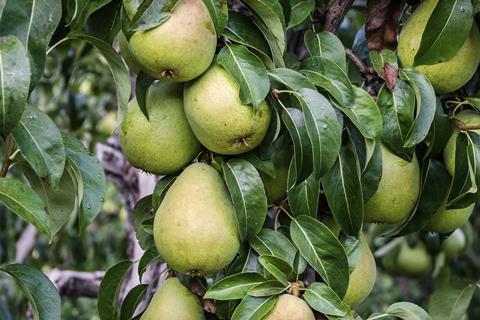After several seasons of reduced volumes, Oregon and Washington pear growers anticipate significant production increase and export growth

After several seasons of reduced production volumes and lagging exports, the US Northwest pear industry – Oregon and Washington – is poised for a rebound in 2025/26.
According to Jeff Correa, international marketing director at Pear Bureau Northwest and chairman of the World Apple and Pear Association, the 2025 Northwest pear crop is expected to surpass 16mn boxes, which will be a significant increase in production over last season’s smallest pear crop in over 40 years. A 16mn-box crop does, however, represent a normal size when considering the past ten seasons.
With this year’s larger pear crop, the industry will be targeting a strategic expansion in exports.
Delicate time
“The plan comes at a delicate time, as global market forces like tariffs, shipping unpredictability and geopolitical unrest continue to cloud the competitive global landscape and potential trade agreements could open improved market access to key global markets,” Correa explains.
Mexico, Canada and the Central American markets will continue to be the focal point of the industry’s export market strategy, with the goal of leveraging the renewed supply for a broader international reach in South American, Asian and Middle Eastern markets.
Many of these, he says, have previously been top ten export markets for the northwest pear industry and Pear Bureau Northwest (PBNW) will be developing programmes to renew trade interest and recapture lost market share.
“For growers, the 2025/26 season signals a pivot,” Correa continues. “A return to normal crop sizes with good volumes for all export markets and because of that, a renewed export ambition. PBNW will be leaning into the USDA Market Access Program and Regional Agricultural Promotion Program to create more opportunities for the industry and have more of a balanced export market portfolio that would lessen some of the over-reliance on the top two markets.”
Global view
The strength of the global pear business varies based on production origin, Correa says.
For some of the Southern Hemisphere producers, 2025 has probably been a strong export year due to the shortages in the US market and correspondingly in Mexico and Canada, he outlines.
At the same time, the global outlook continues to get cloudier by the day with a chance of tariffs and potential retaliatory tariffs, which is going to make planning more difficult for Northwest exporters.
“In general, I feel that globally the pear market has been stagnant for many years since the pandemic,” Correa says. “Costs have risen, and those inflationary pressures have made some consumers more conservative in their fresh produce purchases, either reducing the number of pears they buy at a time or finding a fruit substitute if pears are too expensive.
”For USA Pears, the weakening US Dollar may help temper some of those inflationary pressures on pricing for the upcoming season.”



